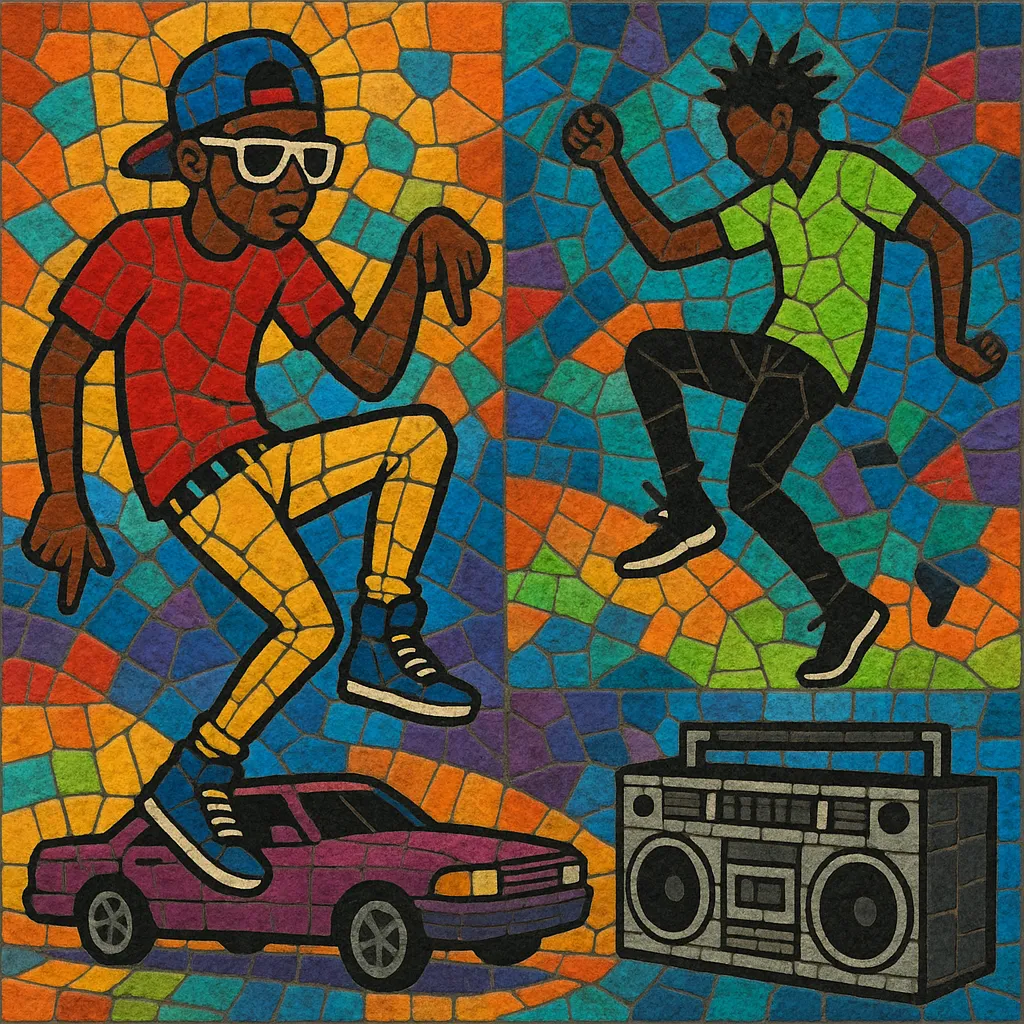Jerk rap is a West Coast party-rap microgenre that emerged from the late‑2000s Los Angeles “Jerkin’” dance movement. It pairs minimal, high‑energy beats with chantable hooks and instructional lyrics tailored to specific dance moves like the jerk, reject, and pin drop.
Production emphasizes crisp claps, stuttering snares, thin but punchy 808 bass, and bright, simple synth leads. Tempos often sit in the 140–150 BPM range (or around 90–100 BPM with a double‑time feel), giving dancers room for quick footwork while keeping verses light and bouncy. The aesthetic—skinny jeans, neon colors, skate and street influences—was as integral as the music itself, spreading through MySpace and YouTube and briefly crossing into mainstream charts in 2009–2011.
Jerk rap grew out of teen party culture in Los Angeles and the Inland Empire, where crews popularized the Jerkin’ dance through early social media (MySpace, YouTube). Local producers crafted minimalist, synthy beats that split the difference between snap’s skeletal drum programming and West Coast club energy, while dancers and rappers traded call‑and‑response hooks designed for routines.
New Boyz’ “You’re a Jerk” (2009) brought the movement nationwide, followed by tracks from Audio Push, The Rej3ctz, Pink Dollaz, The Ranger$, and Cold Flamez. The sound’s hallmarks—bright leads, clap‑heavy drums, simple basslines, and dance‑centric lyrics—made it perfect for viral routines and school parties. Regional radio and blogs amplified the scene, and major‑label singles briefly pushed jerk rap onto mainstream charts.
As the initial wave cooled, elements of jerk rap’s minimal bounce and chantable hooks flowed into a new Los Angeles club‑rap aesthetic. Producers and artists who came up around Jerkin’ informed the early‑2010s rise of West Coast “ratchet music,” whose skeletal drums and infectious hooks would dominate regional radio and influence national club rap.
Although its mainstream moment was short, jerk rap proved how online youth dance cultures could shape pop and hip‑hop in real time. Its DIY distribution, participatory dance focus, and ultra‑lean beats anticipated later social‑video‑driven rap trends, leaving a clear imprint on West Coast party rap and club‑oriented production.


